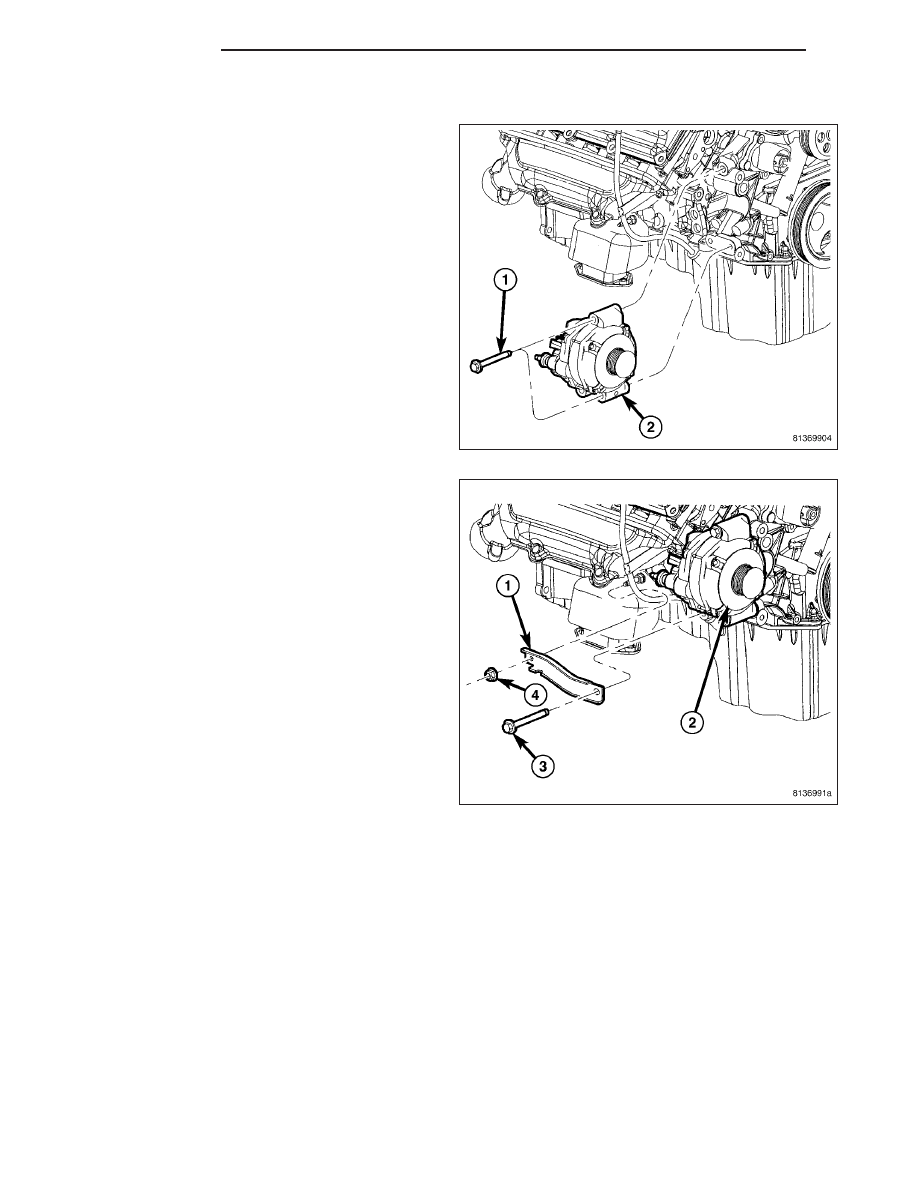Chrysler 300/300 Touring/300C, Dodge Magnum. Manual - part 421

5.7L
1. Position generator (2) to engine and install 2
mounting bolts (1).
2. Tighten bolts. Refer to Torque Specifications.
3. Position support bracket (1) to generator and install
bolt (3) and nut (4). Tighten bolt / nut. Refer to
Torque Specifications.
4. Snap field wire connector into rear of generator.
5. Install B+ terminal eyelet to generator output stud. Tighten mounting nut. Refer to Torque Specifications.
6. Lower vehicle.
CAUTION: Never force a belt over a pulley rim using a screwdriver. The synthetic fiber of the belt can be
damaged.
CAUTION: When installing a serpentine accessory drive belt, the belt MUST be routed correctly. The water
pump may be rotating in the wrong direction if the belt is installed incorrectly, causing the engine to over-
heat. Refer to belt routing label in engine compartment, or refer to Belt Schematics in 7, Cooling System.
7. Install generator drive belt. Refer to 7, Cooling System for procedure.
8. Install negative battery cable to battery.
8F - 70
CHARGING
LX